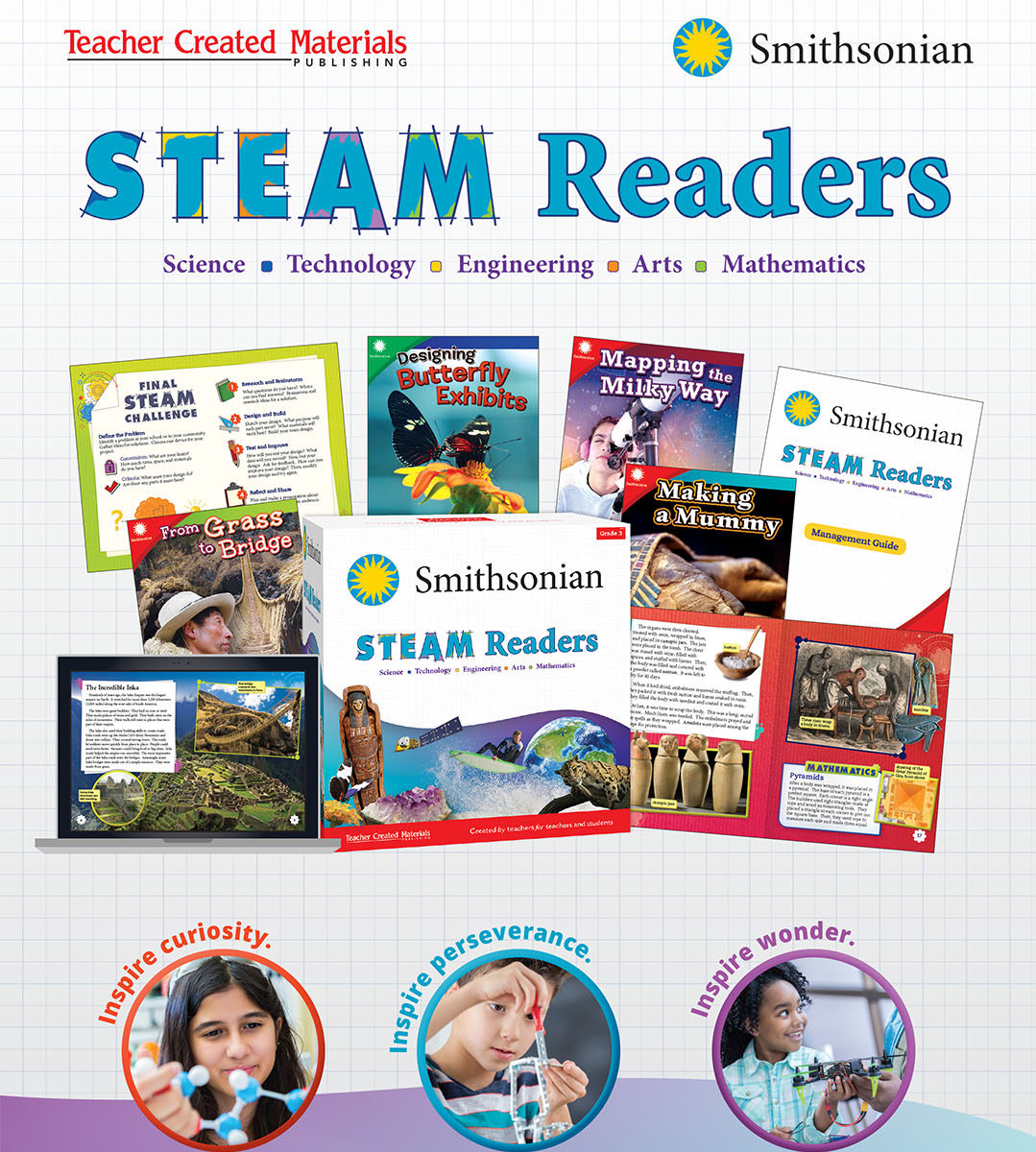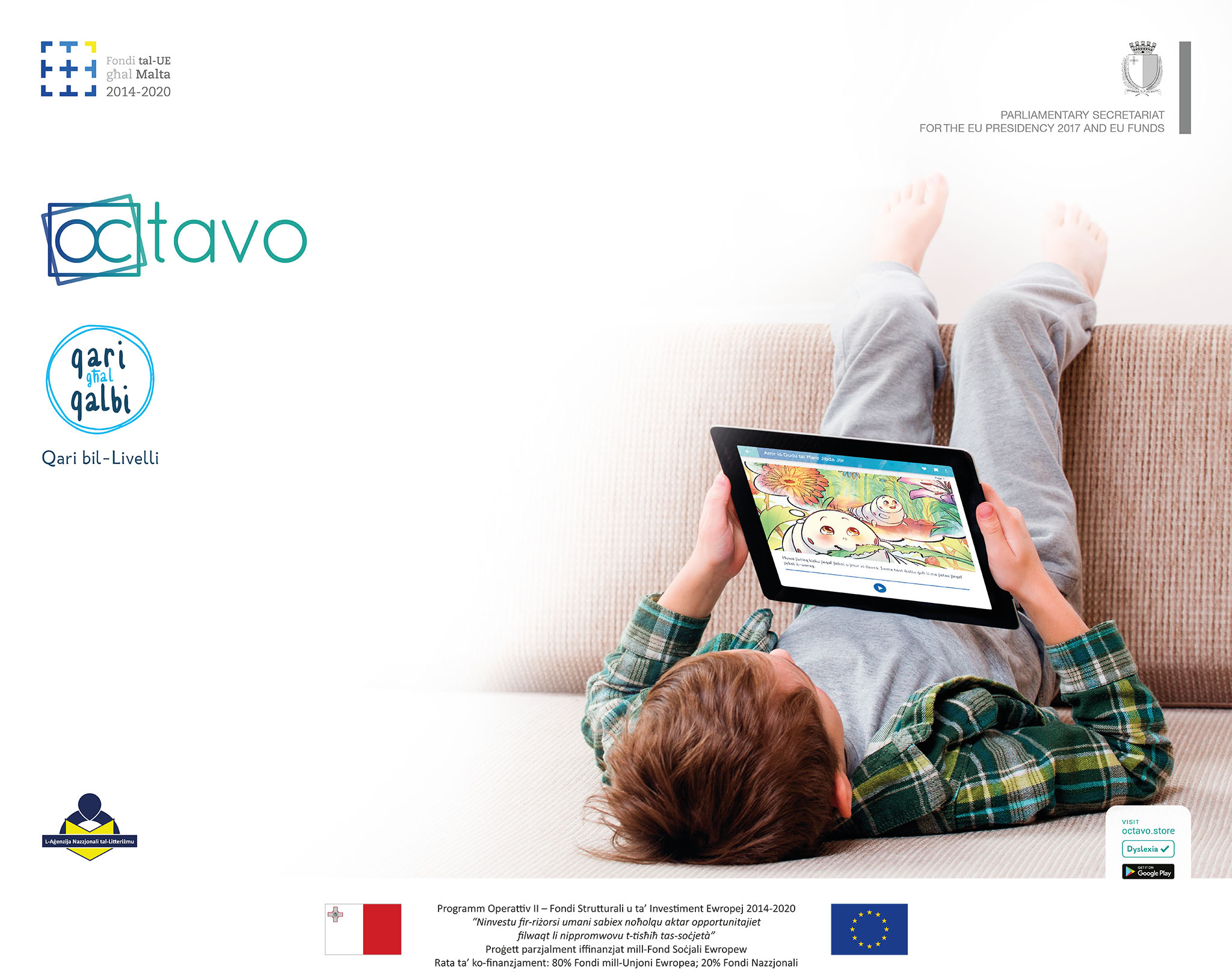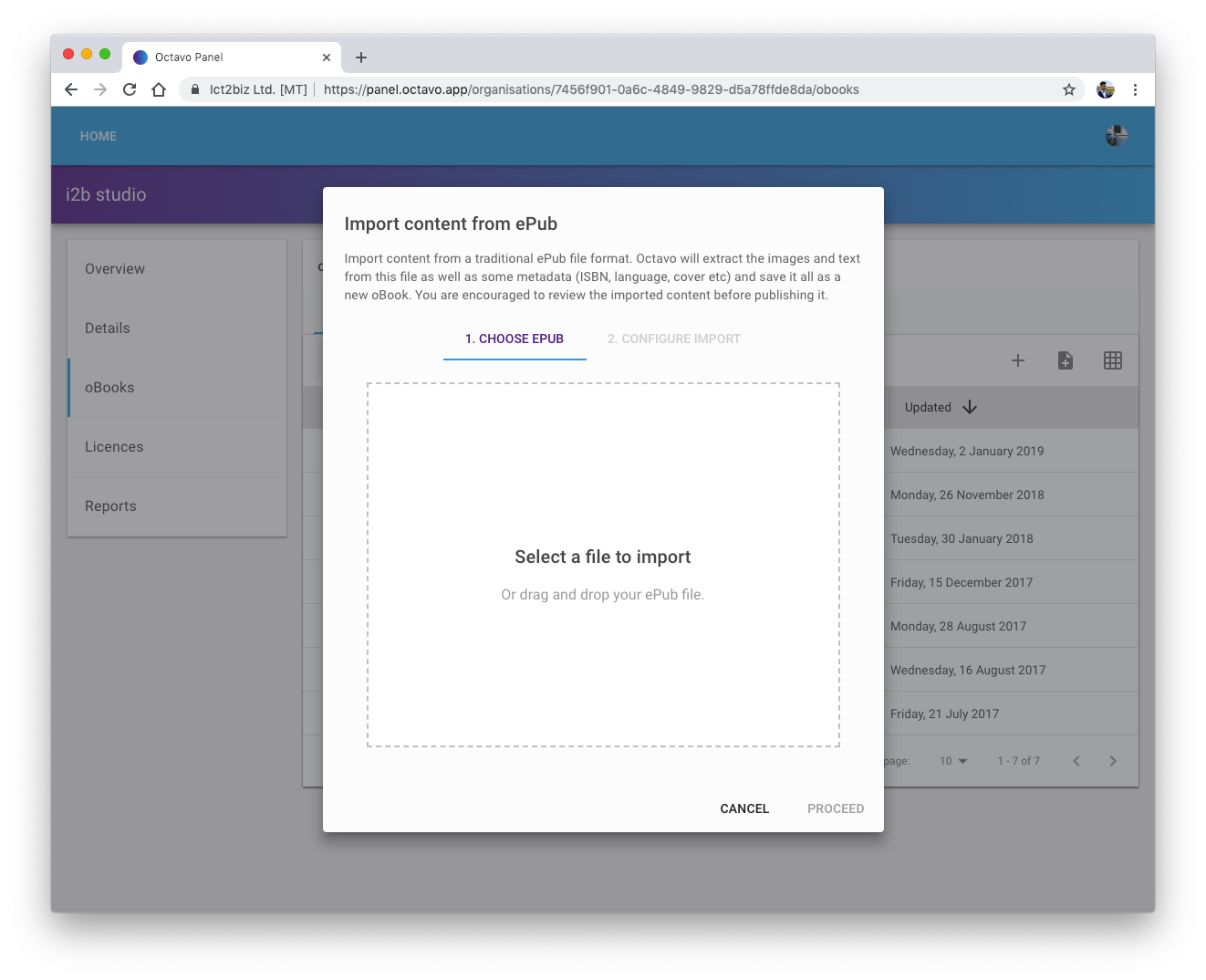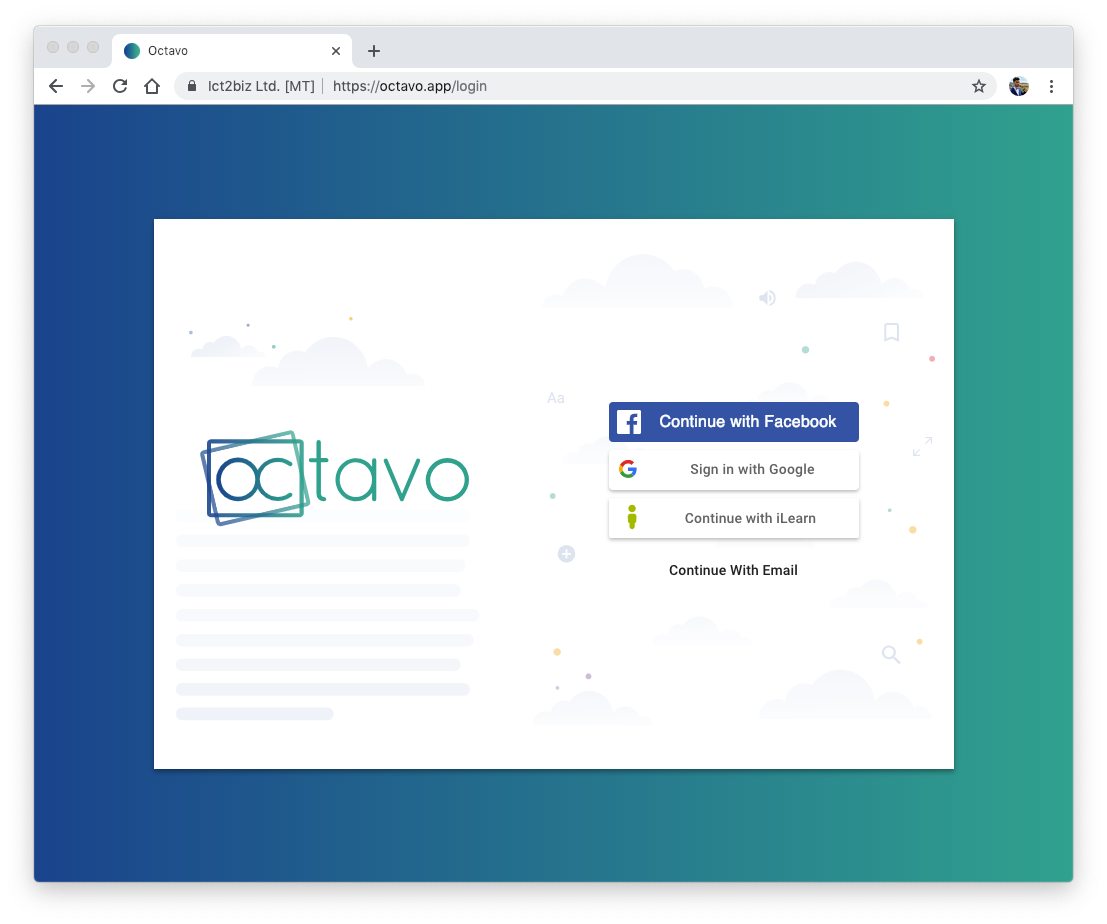During these tough times, everyone is making contributions to go through these circumstances as best as we can. We at Octavo are doing what we can to provide you and your children with great content to read and enjoy as a family. Last week, we made a collection of oBooks in Maltese available for free, and today we are doing the same with content in the English language.
Continue readingBringing free content to Maltese students during the schools’ shut down period
The whole world is currently suffering an almost global shut down due the spread of the COVID-19. At Octavo, we want to add our two cents to ease the confinement time by providing content for free in Maltese.
Continue readingChallenging history with technology
Who said that history is only about the past and old traditional techniques?
As all Maltese 11 to 13-year-old students in Malta learn about the history of Malta, such as Everyday life in the stone age, Octavo took on the challenge to leave its mark by being the first Digital platform to distribute History textbooks digitally in the classroom.
Import ePub files as oBooks in Octavo
Nobody said it was going to be easy, still we accepted the challenge: creating a file-less content platform from the ground up. This implied that the content would also need to be inputted directly in the Octavo Panel. Until today.
Continue reading “Import ePub files as oBooks in Octavo”iLearn single sign on integration
Providing our users the smoothest of the on-boarding processes out there has always been a crucial aspect for us creating Octavo. We know, as much as you do, how complicated and long some sign up forms can be. And let’s not include the terms and conditions, privacy policy and many other time consuming tasks to this list.
As part of our collaboration with the Ministry for Education and Employment of Malta to provide students and teachers a platform where to find educational and reading content, Octavo is now compatible with the current account systems they use: iLearn.
Continue reading “iLearn single sign on integration”The importance of reading
Reading offers one the opportunity to learn from the experiences that writers choose to share with their readers. Moreover, reading can be of great benefit for one’s health because it stimulates the brain and keeps Alzheimer’s disease and dementia at bay. It also improves memory and helps with concentration, which is a skill that is lacking today in the world of internet, Twitter and short online posts.
Continue readingInspiration: Famous personalities who were/are dyslexic
I was dyslexic, I had no understanding of schoolwork whatsoever. I certainly would have failed IQ tests. And it was one of the reasons I left school when I was 15 years old. And if I – if I’m not interested in something, I don’t grasp it. -Richard Branson
For Muhammad Ali, it wasn’t easy getting in the ring with dyslexia but he came out as a champion. Sir Richard Branson says dyslexia came as an advantage to him. Steve Jobs & Bill Gates never graduated but created the globally recognisable companies in the world. Dyslexia is not a disability, it’s a different style of learning and understanding things.
Continue reading “Inspiration: Famous personalities who were/are dyslexic”
Consider these 5 writing tips before you start writing children’s books
I know what I liked as a child, and I don’t do any book that I, as a child, wouldn’t have liked.” -H.A. REY
Finally, you have made up your mind for writing children’s books and are now looking for courses, books or workshops which can help you in this adventure. This week, the Octavo team gathered to discuss how to write children’s books and with the help of collective researches done, we came up with five very important writing tips which you must follow for writing your children’s book.
Continue reading “Consider these 5 writing tips before you start writing children’s books”
Are creatively designed books more attractive to kids?
Research shows that children are mentally stimulated by design elements, creative illustrations, and pictures used. You might also agree with the same if you recall your childhood days and the types of books you were most attracted to. The ones with pictures, illustrations, and nicely created environments! Thus, for the better benefit of the kids, the books should be designed in a very creative way so that the children find them attractive.
Our team did a comprehensive study of what makes a book creatively designed and we found that the pictures, environment, and words amplifying the images form the building blocks of the same. Let us understand them in detail.
- Pictures: Pictures help the kids get an interesting overview of the content they are reading. Images, illustrations, etc. make the kids feel more connected to the story. A wise use of images makes the book really interesting to read.
- Environment: The colours used in the background (of the images) say a lot about the story being conveyed.
- Words amplifying images: We found that when kids see images with the content, it helps them understand the complete scenario. How does the character look, how does he behave etc. when depicted in images, make the book even more interesting to read. Also, emotions, the most important of all, when shown in images, make the emotional skills of kids even stronger.
Although most of the books like picture books, comics and manga are creatively designed, we would explain the findings in detail taking the example of picture books here.
Picture books and reading skills
“Don’t judge a book by its cover” is a very popular saying and we agree with it. However, with children, it is not the case. Children judge a book by its cover only. Have you ever seen a child in a bookstore? If the cover is attractive enough, then they would like it and would want to explore it. Be it any children’s book, the first impression of the book is usually shaped by the images or pictures used in the book. Creatively designed books bring the stories to life and beg to be explored.
In the picture books, pictures convey the meaning well before the reader reads the text. It has been found that the picture books can help increase the vocabulary, which ultimately leads to improved reading skills.
Picture books and empathy
Apart from reading skills and visual literacy, the picture books also help in building emotional skills. Empathy is the only thing which differentiates humans from other organisms. The development of empathy starts from the age of 4 in kids but it might not work the same way with kids with autism and other variations of the disease. The kids with autism generally develop it very slowly.
When kids see pictures which are connected to an emotion, they generally feel attached to it. For example, kids smile when they see a smiling image or a smiling character, beautiful scenery or a cute animal. Similarly, they feel fear when they see a ferocious animal or a monster. They start feeling the emotions of the character in the story during the reading. This generally happens in the early phases that they literally get happy or scared as if the monster is coming after them but with time they start relating to the feelings of the character without feeling the same kind of fear. They can empathise with the emotions. Also, gradually with age, they start remembering the names of the characters and start using those in conversations as if they were real. Pictures help in building that connect and creating the impact.
Picture books and imagination
Ideas are all around, they just need to be triggered. Picture books help the kids question more. It can be small questions like why is the color of the sky dark blue here or why is the face of Roger red, and much more.
With the ability to question, comes the ability to imagine
You must understand this that picture books are a great source of imagination and creativity for kids. Books which bring out the creative ability of a kid, really attract the kids. Artistic books like “Ideas Are All Around” by Philip C. Stead, “What to Do With a Box” by Jane Yolen and Chris Sheban, “Frida and Bear Play the Shape Game” by Hanne Bartholin are some of the best picture books have proven to spark imagination in kids.
Conclusion
After doing an exhaustive research we found that creatively designed books do play a great role in leaving an impact on the readers. Also, books with nicely illustrated pictures catch the attention of kids more than the simple books with no or very fewer images.
Expert tips
Now when you know benefits of a creatively designed book, understand how to create one:
- Choose an inquisitive title for the book: Choose a title for your book which raises a question in the minds of the reader and excites them to read it.
- Design a relevant and very creative cover image: As said earlier, children judge a book by its cover. The more creativity you put in, the better it is.
- Keep the usage of words very simple: For children’s books, simplicity is the key while choosing the words for your sentences. Make the sentences very easy to comprehend and understand for them.
- Use images with great wisdom: Get the images designed very carefully. Pictures are very important for kids and thus, it is advisable to design and use very attractive images.
- Use easy to read typefaces and font sizes: Select a typeface in such a way that it is easy to read for all the children, even for those with reading disabilities. Also, it is advisable to use medium size or large size font for children’s books.







